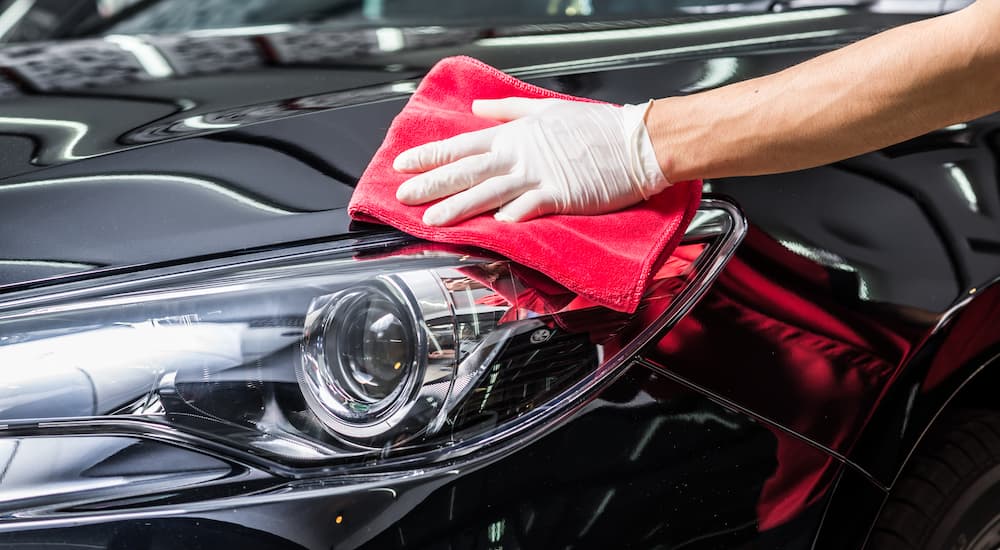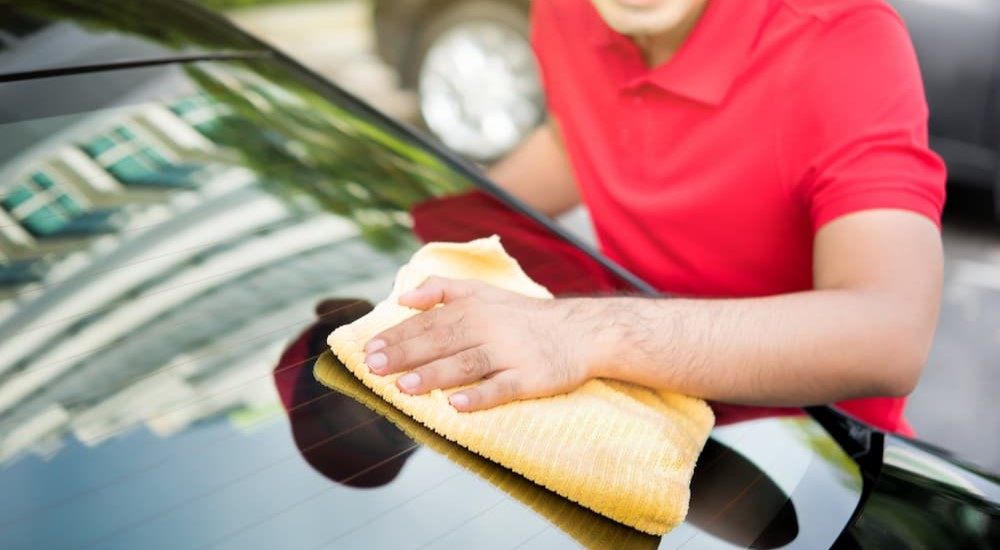As the days get shorter and the leaves start to change, it’s not only time to dig out those cozy sweaters and grab yourself a pumpkin spice latte – it’s also a sign that your vehicle needs attention. As you say goodbye to summer, it’s a great time to prepare your car for colder temperatures. Following a simple routine for end-of-summer vehicle maintenance and care will help you ease into the fall and winter months. Doing so will not only extend the life of your vehicle but keep you and your occupants safer when the mercury dips.
Don’t be fooled by a few bonus weeks of warm weather; as the calendar flips to September, that’s your cue to prep your ride so you’re not caught off-guard by the first round of inclement weather. From checking your tires to swapping out those sun-hardened wiper blades, doing a deep dive on routine maintenance and winterization will save you headaches and help you avoid a last-minute scramble. It doesn’t matter whether you drive a brand-new vehicle or one with six figures on the odometer – the same maintenance rules apply to all vehicles.
Many drivers send preventative maintenance to the bottom of their to-do lists, opting to wait until a warning light shows up on the dash or the gas tank hovers on empty. This year, consider getting ahead of the game; follow this simple list to prepare your vehicle for the colder temperatures coming sooner than you think. By going down the list and checking off these easy maintenance items, you’ll tackle that patch of slippery, wet leaves or black ice effortlessly.
#1. Check Your Tire Tread
Those fleeting months of driving with the windows down while the warm sun shines on your face are almost behind you, so when was the last time you checked your tires for wear? The change of seasons is an ideal time to look at the health of your tires, and all you need is a penny. Simply stick a penny between the raised treads of your tire with Lincoln’s head pointing down. Do this at multiple spots on the tire (not just in one spot). If you can consistently see his entire head, you probably need new tires. You should also look for a pattern of uneven wear, which could signal a misalignment or a more serious issue with your vehicle.
#2. Change Your Windshield Wipers
Summer’s long, hot days wreak havoc on your wiper blades. They can become brittle and dry over time, diminishing their ability to adhere to your windshield and effectively “squeegee” moisture away from your field of vision. Dust build-up can also contribute to accelerated wear of your wiper blades. Here’s how to check your blades: pull your wiper blades away from the windshield and closely inspect them for cracks. Bend the blades back and forth to check for stiffness. Next, wiggle them to see if they’re coming loose from the frame. Another telltale sign is skipping. When you turn on your windshield wipers, do they skip over the glass or leave streaks as they arc across the windshield? If so, it’s time to replace them.
#3. Deep Clean and Wax the Exterior
Hopefully, your routine includes getting regular car washes. If not, you should consider adding a trip to the car wash at least once a week. But even if you’re a dedicated once-a-week car washer, you might be skipping an important step – waxing. Applying a coat of wax protects your clearcoat against scratches and adds a layer of extra protection against UV rays, bird droppings, and road salt. How often should you wax your car? Every time you wash it is ideal, say experts, but at a minimum, have your car professionally waxed (or do it yourself!) once a month.

#4. Get an Inspection
One habit you might consider adopting is a monthly – or quarterly – trip to your dealer for a multi-point inspection. Most dealers perform an inspection whenever you visit for routine maintenance, but at the change of each season, consider scheduling an appointment for a comprehensive overview of your vehicle’s primary systems and components. A multi-point inspection performed by a factory-trained technician includes your vehicle’s brakes, steering and suspension, battery, hoses, and belts.
#5. Check Your Headlights
Are your low and high-beam headlights working? How about your taillights and turn signals? Grab a buddy and run through a complete check of your car’s exterior lighting systems. Many drivers go months without knowing they’re driving with a burned-out taillight, and some learn the hard way – by getting pulled over. As you check your lights, ensure the casing covering the lights is clear and not clouded. Look for signs of moisture and inspect the cover for any cracks. As the days get shorter, you’ll need your headlights more than ever.
#6. Read Your Owner’s Manual
It’s astounding how many car owners never crack their owner’s manuals. Your vehicle’s owner’s manual is the bible for staying on top of routine maintenance and diagnosing common mechanical issues. Not only that, but it tells you where your windshield washer fluid reservoir is, how to open your hood, and when to schedule an appointment with your dealer. Take a peek at the odometer and consult your owner’s manual to see if it’s time for any scheduled maintenance. Follow the instructions for checking common fluid levels and either do it yourself or ask your technician to do it for you.
#7. Buy Some Windshield Washer Fluid
All it takes is one experience running out of windshield washer fluid on a sunny winter day after an overnight snowstorm. You’re driving down the highway, and the car in front of you sprays a layer of muddy sludge across your windshield. You push the lever to release some fluid, and…nothing. For the rest of your drive, you’re squinting through a thick coating of salt and dirt, fruitlessly running your wipers, which only makes it worse. Spare yourself the frustration – and the potentially unsafe practice of driving with low visibility – by keeping a stash of windshield washer fluid at home and in your car. That way, you can top off your windshield washer fluid regularly throughout the winter months.

End of Summer Maintenance Saves Time and Money
Though some of these maintenance tasks won’t be necessary, the change of seasons is a great time to trigger your brain and check your vehicle to ensure you’re ready for what’s coming. You might find that your tires are in great shape, or you may garage your vehicle, so your wiper blades are almost like new – the point is to create a routine, so you’re not caught off-guard. For many drivers, remembering is the hardest part.
Become habituated to seasonal maintenance, and you’ll hedge your bet. Doing so also allows you to consolidate that pesky routine maintenance into a few days each year, ensuring it gets done and eliminating the need to remember. Owning a vehicle comes with a lot of responsibility, especially if you want to maintain its value and optimize your safety while on the road. As summer turns to fall and fall turns to winter, driving hazards increase. A new set of wiper blades, tires with plenty of tread, and a full reservoir of washer fluid are just a few ways to combat these seasonal driving challenges.

